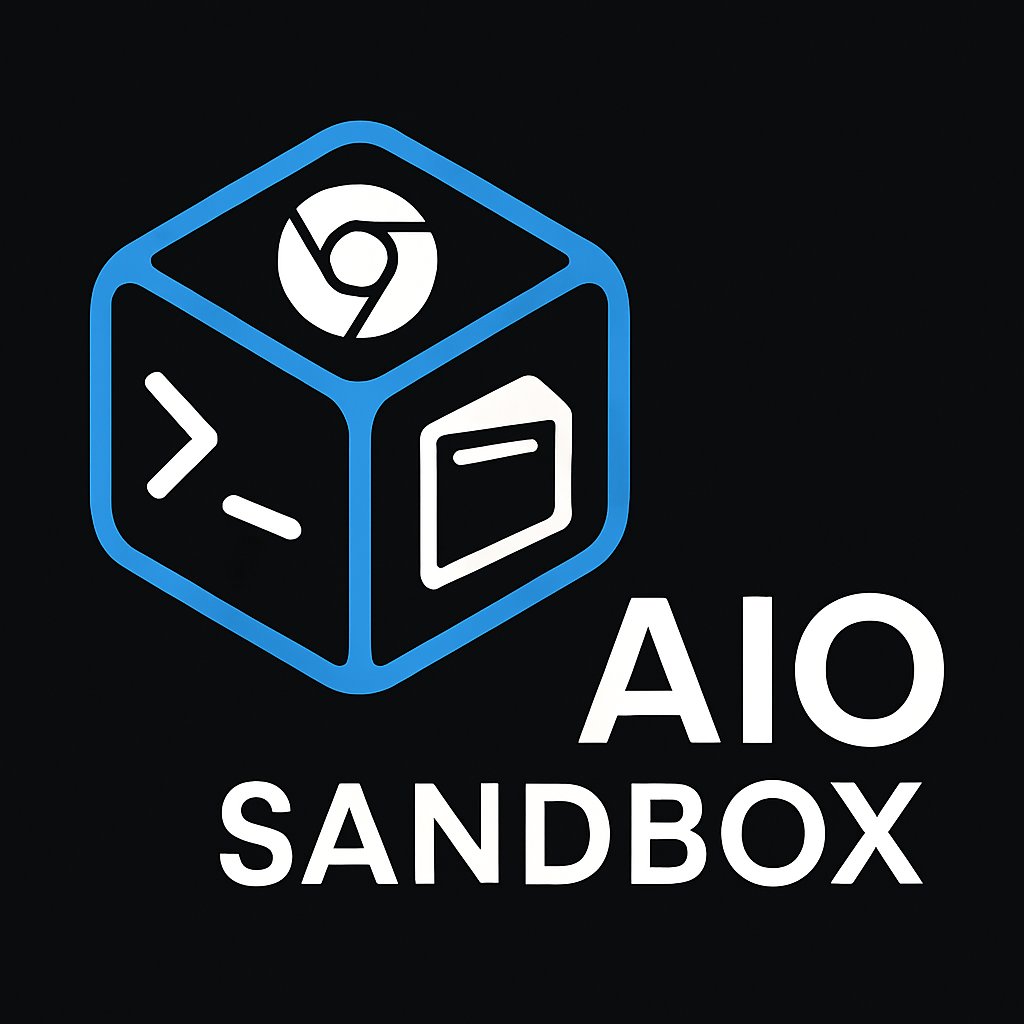Preview Proxy
AIO Sandbox includes built-in proxy endpoints that allow you to preview and test web applications and services directly from your development environment.
Proxy Types
Frontend Application Proxy
Access frontend applications using the absolute proxy:
http://localhost:8080/absproxy/{port}/
Use cases:
- React, Vue, Angular applications
- Static site generators
- Development servers with asset bundling
- Any frontend framework with dev server
Example:
# Start a React app on port 3000
cd /workspace/my-react-app
npm start
# Access via proxy
# Browser: http://localhost:8080/absproxy/3000/
Backend Service Proxy
Access backend services using the relative proxy:
http://localhost:8080/proxy/{port}/
Use cases:
- API servers
- Backend microservices
- Database admin interfaces
- Development tools and utilities
Example:
# Start an Express API on port 4000
cd /workspace/my-api
npm start
# Access via proxy
# API endpoint: http://localhost:8080/proxy/4000/api/users
Configuration Examples
React Development Server
# Start React app
npx create-react-app my-app
cd my-app
npm start # Runs on port 3000
# Access at: http://localhost:8080/absproxy/3000/
Express API Server
// server.js
const express = require('express');
const app = express();
app.get('/api/health', (req, res) => {
res.json({ status: 'healthy', timestamp: new Date() });
});
app.listen(5000, () => {
console.log('API server running on port 5000');
});
// Access at: http://localhost:8080/proxy/5000/api/health
Next.js Application
# Start Next.js app
npx create-next-app@latest my-nextjs-app
cd my-nextjs-app
npm run dev # Runs on port 3000
# Access at: http://localhost:8080/absproxy/3000/
Python Flask API
# app.py
from flask import Flask, jsonify
app = Flask(__name__)
@app.route('/api/data')
def get_data():
return jsonify({'message': 'Hello from Flask!', 'port': 5000})
if __name__ == '__main__':
app.run(host='0.0.0.0', port=5000, debug=True)
# Access at: http://localhost:8080/proxy/5000/api/data
Best Practices
Frontend Applications
- Use absproxy for SPAs: Single Page Applications work best with absolute proxy
- Configure base URL: Set your app's base URL to work with proxy
- Handle routing: Ensure client-side routing works with proxy path
Backend Services
- Use proxy for APIs: Backend services should use the relative proxy
- CORS configuration: Configure CORS to allow proxy domain
- Health checks: Implement health check endpoints for monitoring
Development Workflow
# Terminal 1: Start backend
cd /workspace/api
npm run dev # Port 4000
# Terminal 2: Start frontend
cd /workspace/frontend
npm start # Port 3000
# Access:
# Frontend: http://localhost:8080/absproxy/3000/
# API: http://localhost:8080/proxy/4000/api/
Proxy Configuration
Environment Variables
Configure proxy behavior with environment variables:
# Maximum proxy connections
PROXY_MAX_CONNECTIONS=100
# Proxy timeout settings
PROXY_TIMEOUT=30
# Enable proxy logging
PROXY_DEBUG=true
Advanced Configuration
For complex applications, you may need custom proxy settings:
// Custom proxy configuration example
const proxyConfig = {
target: 'http://localhost:3000',
changeOrigin: true,
pathRewrite: {
'^/absproxy/3000': ''
},
onProxyReq: (proxyReq, req, res) => {
// Custom headers or modifications
proxyReq.setHeader('X-Forwarded-Proto', 'http');
}
};
Troubleshooting
Common Issues
Application not accessible via proxy:
- Check if application is running on specified port
- Verify application binds to
0.0.0.0 not just localhost
- Ensure no firewall blocking internal connections
CORS errors:
// Fix CORS for API servers
app.use(cors({
origin: ['http://localhost:8080', 'http://localhost:3000'],
credentials: true
}));
Asset loading issues:
// Configure React for proxy
// package.json
{
"homepage": "/absproxy/3000/",
"proxy": "http://localhost:4000"
}
Debug Commands
# Check what's running on ports
netstat -tulpn | grep LISTEN
# Test direct connection
curl http://localhost:3000
# Test proxy connection
curl http://localhost:8080/absproxy/3000/
# Check proxy logs
docker logs aio-sandbox | grep proxy
Security Considerations
Internal Access Only
Proxy endpoints are designed for development use:
- Only accessible from within AIO Sandbox
- Not exposed to external networks by default
- Use reverse proxy for production deployments
Port Restrictions
Some ports may be restricted:
- System ports (< 1024) require sudo
- Reserved ports for AIO Sandbox services
- Configure application to use available ports
Integration Examples
With CI/CD Pipelines
# GitHub Actions example
- name: Test in AIO Sandbox
run: |
# Start application
npm start &
# Wait for application to start
sleep 10
# Test via proxy
curl -f http://localhost:8080/absproxy/3000/health
With Testing Frameworks
// Cypress configuration
module.exports = {
baseUrl: 'http://localhost:8080/absproxy/3000',
video: false,
screenshotOnRunFailure: false
};
Next Steps
- Terminal Integration: Control services via shell → Shell API
- File Operations: Manage application files → File API
- Browser Automation: Test applications → Browser Guide

